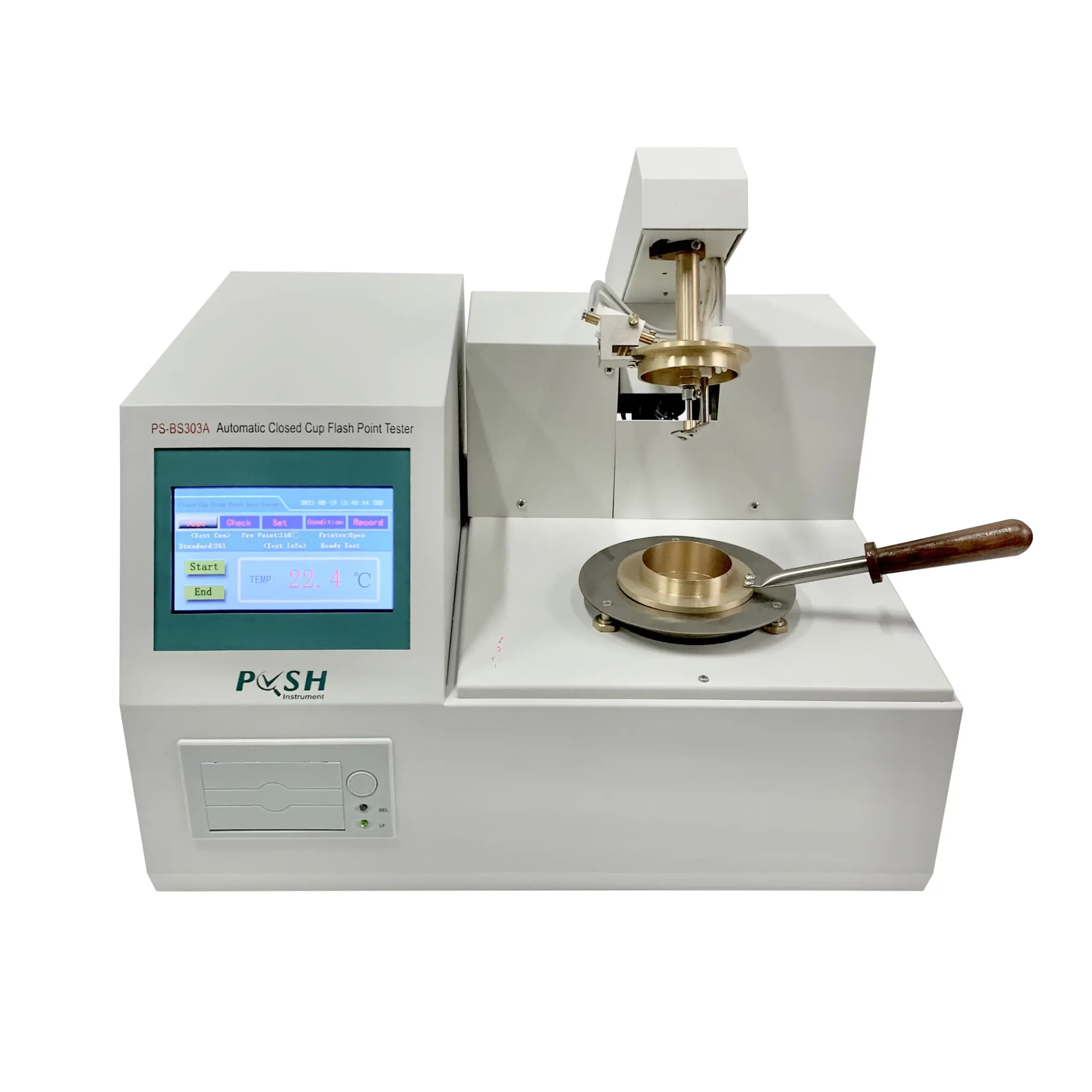A Flash Fire Point Tester is primarily used to assess the fire safety properties of flammable liquids and petroleum products. These tests are crucial to determine the lowest temperature at which these substances can produce flammable vapors, potentially leading to a flash fire or explosion.
The types of flammable liquids and petroleum products that can be tested and evaluated using a Flash Fire Point Tester include:
- Gasoline: Gasoline is one of the most common flammable liquids tested for its flash fire point. Understanding its fire safety properties is essential for safety in the automotive and fuel industries.
- Diesel Fuel: Diesel fuel is widely used in transportation and industrial applications. Flash fire point testing helps ensure its safe storage and handling.
- Jet Fuels: Jet fuels used in aviation must meet strict safety standards, and flash point testing is essential to verify their suitability for use.
- Kerosene: Kerosene is used as fuel for heating, lighting, and jet engines. Testing its flash fire point is important for various applications.
- Lubricating Oils: Many lubricating oils, including engine oils, hydraulic oils, and industrial lubricants, need to meet specific safety standards.
- Solvents: Various solvents used in industrial processes, paints, coatings, and cleaning solutions can pose fire risks. Flash point testing is vital for safety in these applications.
- Chemicals: A wide range of flammable chemicals are used in industrial processes. Testing their flash fire points helps ensure safe handling and storage.
- Paints and Coatings: Paints, varnishes, and coatings often contain flammable components. Testing their flash fire points ensures safe application and storage.
- Adhesives and Sealants: These materials may contain volatile components that need to be evaluated for fire safety.
- Aerosols: Many consumer products, such as aerosol sprays, may have flammable propellants, making flash fire point testing essential.
- Fuel Additives: Various fuel additives are used to improve fuel properties. Testing their fire safety characteristics is necessary.
- Flammable Chemical Products: A wide range of chemical products used in research, industry, and consumer applications may require flash fire point testing for safety assessment.
Flash fire point testing is important for ensuring the safe storage, transportation, and handling of these flammable liquids and petroleum products. It helps prevent accidents, fires, and explosions by establishing safe operating conditions and storage practices. The specific standards and regulations for flash point testing may vary depending on the industry and application.
How does a Flash Fire Point Tester work to determine the flash point and fire point of a liquid?
A Flash Fire Point Tester is an essential instrument used to determine the flash point and fire point of a liquid, both of which are critical parameters for assessing the flammability and safety of a substance. Here’s how a Flash Fire Point Tester typically works:
1. The Test Sample: A small amount of the liquid to be tested is placed in a container or a test cup designed for flash point testing. The sample size and container type may vary depending on the specific testing standards and the characteristics of the liquid being tested.
2. Heating System: The Flash Fire Point Tester is equipped with a heating system that applies heat to the test sample. This heat source is typically an open flame, flash fire point tester an electric heater, or a temperature-controlled electric furnace.
3. Temperature Measurement: The instrument is equipped with one or more temperature sensors, such as thermocouples, placed within the test cup. These sensors continuously measure the temperature of the liquid as it is heated.
4. Ignition Source: The Flash Fire Point Tester has a carefully controlled ignition source, often in the form of a pilot flame or an electrically heated wire, positioned above the liquid surface.
5. Continuous Observation: The instrument continuously records the temperature of the test sample as it is heated. The ignition source is continuously monitored as well.
6. Flash Point Determination: The flash point of the liquid is determined when the continuous heating of the sample results in the release of flammable vapors. When these vapors come into contact with the ignition source, a flash or momentary fire occurs. The temperature at which this flash or fire event happens is recorded as the flash point. It represents the lowest temperature at which the liquid’s vapors can ignite momentarily when exposed to an open flame.
7. Fire Point Determination: To determine the fire point, the heating process continues beyond the flash point temperature. The fire point is reached when the fire sustains itself for a specified duration after the initial flash. The fire point is typically a few degrees higher than the flash point and represents the temperature at which the liquid’s vapors can continue to burn in the presence of an ignition source.
8. Data Recording: The instrument records the flash point and fire point temperatures for the liquid being tested.
9. Safety Features: Flash Fire Point Testers are equipped with safety features, such as ventilation systems and safety enclosures, to minimize the risk of accidents during testing.
10. Compliance: The test results are compared to relevant safety standards and regulations to determine if the tested liquid meets the required safety criteria.
The flash point and fire point measurements are essential for classifying and labeling flammable substances, ensuring safe storage, handling, and transportation, and assessing the potential fire hazards associated with the liquid. The specific test procedures and safety standards may vary based on the type of liquid and industry requirements.
